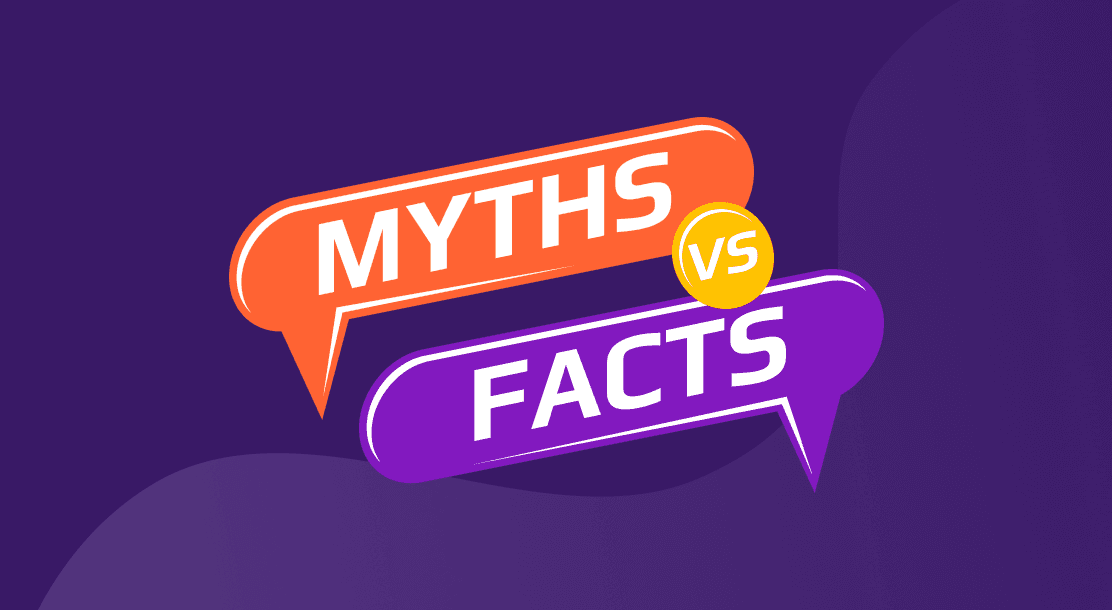
Content is the lifeblood of any digital marketing effort. That is why content marketing has caught on in recent times. Far from overt selling, it is a means to promote a brand by providing the audience with educational, informative, or entertaining content.
However, there is a string of myths that plague the world of content marketing. This blog is a careful study of a few such myths vs. facts.
6 Content Marketing Myths Busted
Scroll on, as we debunk some of the most common content marketing myths.
1. You need to publish more content to rank better

Just as we all know that more isn’t always better in life, quality trumps quantity when it comes to content creation as well. It doesn’t matter if you have a lot of material. If the content is low-quality, your visitors will leave and never return. Understand your audience, gauge how they prefer to consume content, and then devise a content strategy. This will assist you in connecting with your target audience and driving traffic to your website.
2. Posting high-quality material alone will improve your search rankings
While high-quality material is enjoyable to read, it is useless if your readers cannot see it; therefore, make sure your content is visible. Use relevant keywords, body headers, and meta tags to optimize your content. For keyword research, you can utilize websites such as Ubersuggest and Moz, to mention a few. Inbound links are equally important for SEO. Then, to broaden your audience, post your material on social media channels.
3. Content marketing isn’t necessary for B2B companies

This is another prevalent content marketing myth. Content marketing is extremely important for B2B firms when it comes to explaining complex processes or defining a product or service. Because B2B sales cycles are longer than those of B2C businesses, using content marketing and its capabilities to boost traffic is quite advantageous.
People spend a lot of time researching your product or service; therefore, you must engage them with interesting content. For example, you can write material to educate businesses about your process, product, or service, and you can include client testimonials and reviews to entice them to take advantage of your offerings.
4. Content marketing is exclusively digital, and excludes offline marketing
There’s a reason why old traditional marketing strategies are considered classics! Content marketing covers traditional advertising such as brochures, flyers, billboards, print media, and more, in addition to digital media. You can also do it in the form of seminars or offline product tutorials.

Content marketing is all about giving your customers a holistic experience, regardless of the means. It’s all about crafting a narrative that connects back to your company.
5. Creating content is inexpensive
Anyone with a computer can write and make videos. However, in order to develop top-tier content, you must have a solid awareness of your industry as well as the necessary scaling talents. If you don’t have the skills yourself, it will cost you money to ask or hire these skilled writers. You may also need to hire design talent and invest in certain tools to track and manage your campaign performance.

6. Successful content marketing generates quick ROI
Content marketing does not guarantee instant success. Even the most effective content marketing strategy needs time to mature. However, you can keep track of your progress. You can examine indicators such as page views, bounce rates, subscriptions, the number of unique visitors, the number of shares, and so on. You can determine brand awareness, conversion, and customer retention with this data, and tweak your strategy accordingly. Remember, content marketing is amply beneficial in the long run.
As you can see, content marketing is critical for establishing a brand and providing a positive user experience. However, you must first comprehend how it functions in order to fully profit from it. With the right content marketing strategy in place, you’ll be able to retain clients and give them a good user experience.
Ninarika Rajendra is a mass media graduate with a keen interest in writing. She aims to switch to full-time freelancing in the near future.

Latest Blogs
Explore how Google’s 2025 AI search updates triggered ranking chaos. Learn actionable strategies to adapt your SEO for AI Overviews, zero-click searches, and SERP volatility. Stay ahead now.
Learn how to rank on AI search engines like ChatGPT, Perplexity, and Gemini by optimizing your content for authority, structure, and relevance. Stay ahead in AI-driven search with this strategic guide.
Explore the best healthcare SEO services for your medical practice. Improve online visibility and effectively reach more patients in need of your services.
Get your hands on the latest news!
Similar Posts

Content Marketing
4 mins read
11 Best B2B Content Marketing Agencies for B2B Companies in 2024

Content Marketing
5 mins read
Top ecommerce Marketing Agencies with Proven Strategies for 2024

Content Marketing
5 mins read